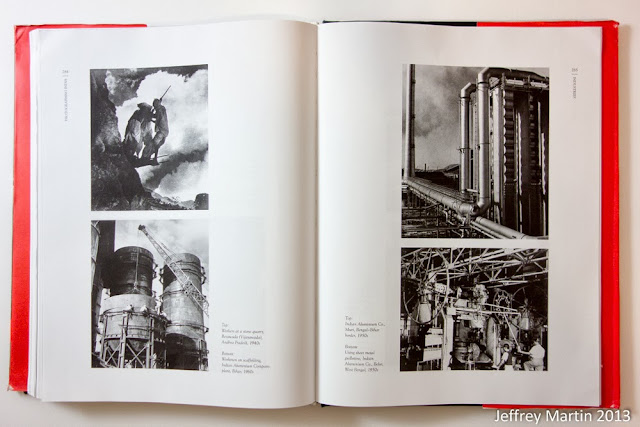 One thing that comes through clearly while reading Indian
photographer Sunil Janah's autobiography is that he had a great life.
He recorded India’s independence and its growth as a new nation
state. His circle of friends and acquaintances included some of the
country's brightest minds. He traveled widely (especially among many
of the non-aligned and socialist nations), and he did all this while
supporting himself as a photographer (a job well below the standards
of India's aspiring bourgeoisie).
One thing that comes through clearly while reading Indian
photographer Sunil Janah's autobiography is that he had a great life.
He recorded India’s independence and its growth as a new nation
state. His circle of friends and acquaintances included some of the
country's brightest minds. He traveled widely (especially among many
of the non-aligned and socialist nations), and he did all this while
supporting himself as a photographer (a job well below the standards
of India's aspiring bourgeoisie).He was by training, and perhaps temperament, an academic, working towards a Master’s degree in English literature at the Presidency College of Calcutta when he was recruited to the Communist Party and became, for lack of any competition, the Party's official photographer. A boyhood pastime turned into several years of passionate practice dedicated to social justice and Indian independence, leading over the course of 40 years to a career and recognition as one of India’s most noted image makers.
Given Janah's disinterest in business (he speculates that his socialist leanings – including antipathy toward money and financial success – are at least partly to blame for his lack of late-life financial security), it was due only to the labors of his son that the photographer’s work has been preserved and now published by Oxford University Press. (An earlier attempt to publish a retrospective in India was unsuccessful in attracting financial support.)1 Besides maintaining a website dedicated to his father's work, Arjun Janah also supervised the 2013 publication of Photographing India.2 The book arrived only a year after his father’s death, a sad ending that saw the photographer blinded by glaucoma and living in America, far from the land he once so lovingly documented.
This posthumous retrospective is a coffee-table sized volume opening with 115 pages of autobiography, including 10 pages of photos from the photographer’s personal life. The remaining 175 pages feature approximately 400 black and white reproductions representing a cross section of Janah’s interests, including images of independence and partition; India’s most notable political leaders; rural life and its inhabitants; the country’s developing industrial sector; the architectural heritage of India’s temples and temple sculptures; and the country’s leading artists and intellectuals.
On first being introduced to his photographs, Janah notes that many people remark how his images seem familiar, as if they may have seen them before. His work has been widely reproduced, but as Janah reminds us, rarely credited and even more rarely compensated. His images have appeared in academic and popular texts, as postcards sold at tourist venues, and even displayed, without credit or compensation, in Indian government offices. While traveling in the country this summer I verified this myself during a visit to the Orissa State Museum in Bhubaneswar, where one of his tribal photos was on display - without credit.
Thankfully his work is now available to an international audience, properly credited, though perhaps a bit too late for the photographer to enjoy the fruits of celebrity or financial compensation.
------------------------
1 A video interview with page mock-ups and the photographer discussing some of the images can be seen here: http://issuu.com/ram-rahman/docs/sunil-janah-photographs
2 See: http://issuu.com/ram-rahman/docs/sunil-janah-photographs
Videos on Sunil Janah
Indian Photographer Ram Rahman discusses Janah's work:
http://www.youtube.com/watch?v=aE1yOhJX4Rk
http://www.youtube.com/watch?v=lvOoxswUHQU
1987 BBC Here and Now documentary:
http://www.youtube.com/watch?v=ggfVinwhmFc
Oxford University Press promotion video:
http://www.youtube.com/watch?v=rgWdGMDtj8c
#








No comments:
Post a Comment